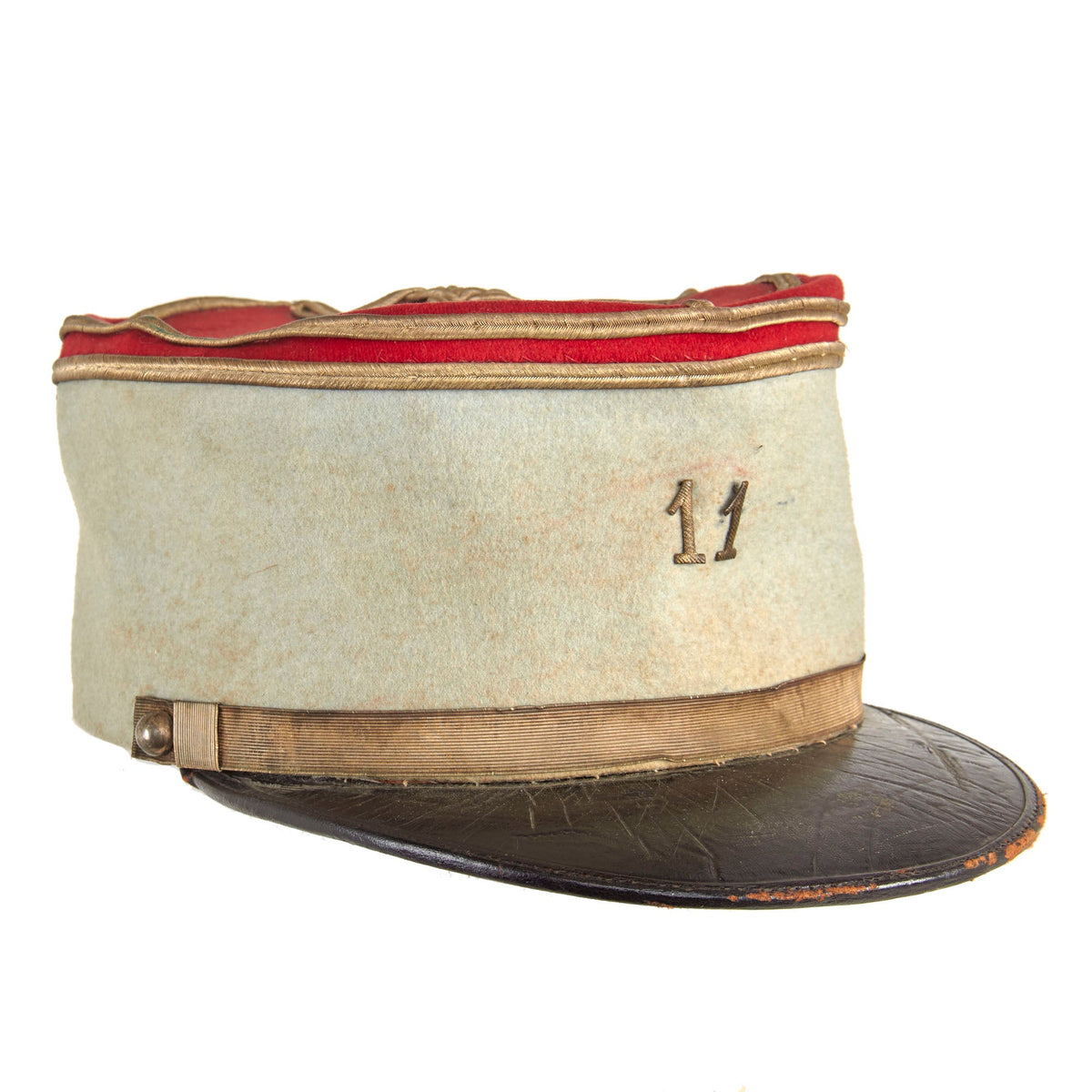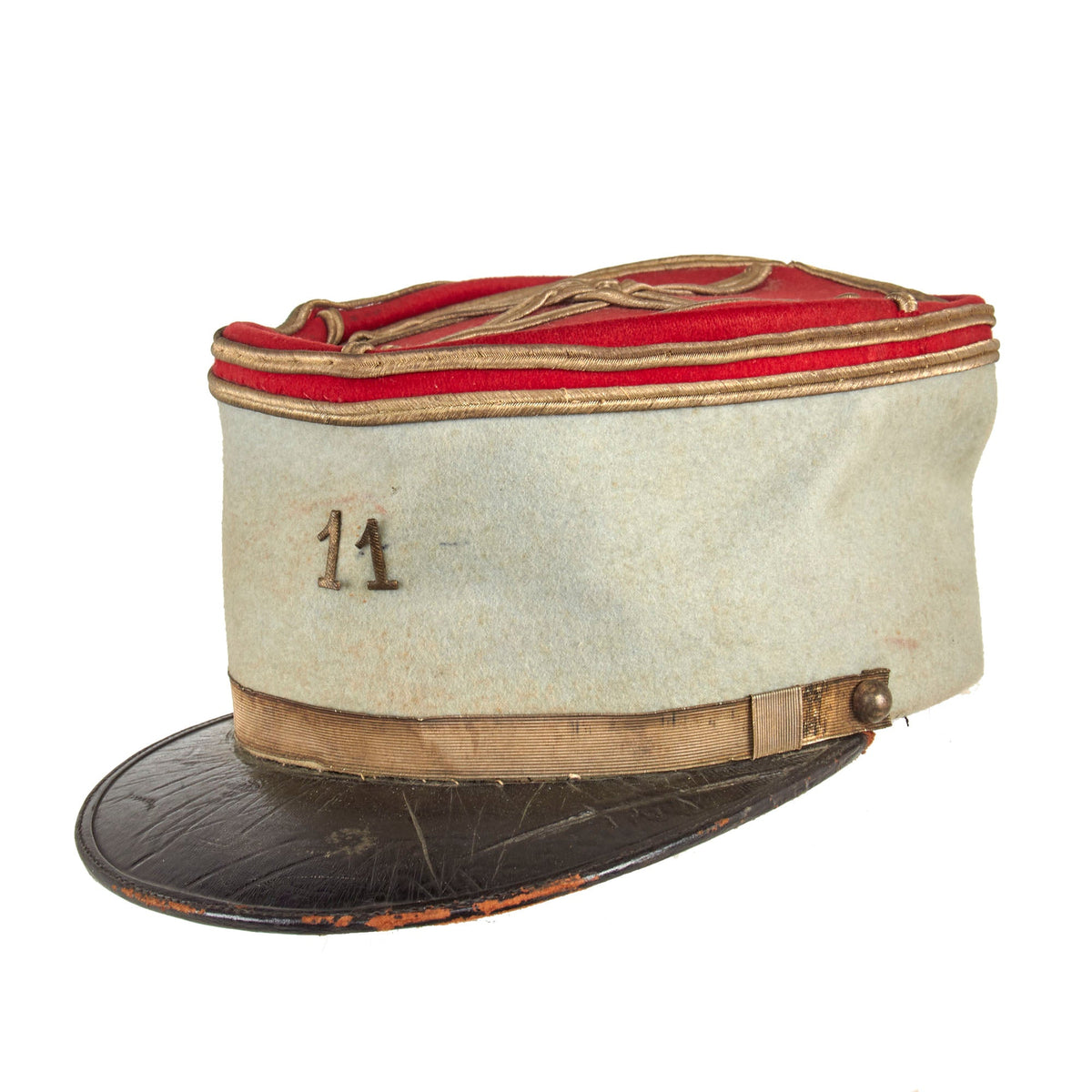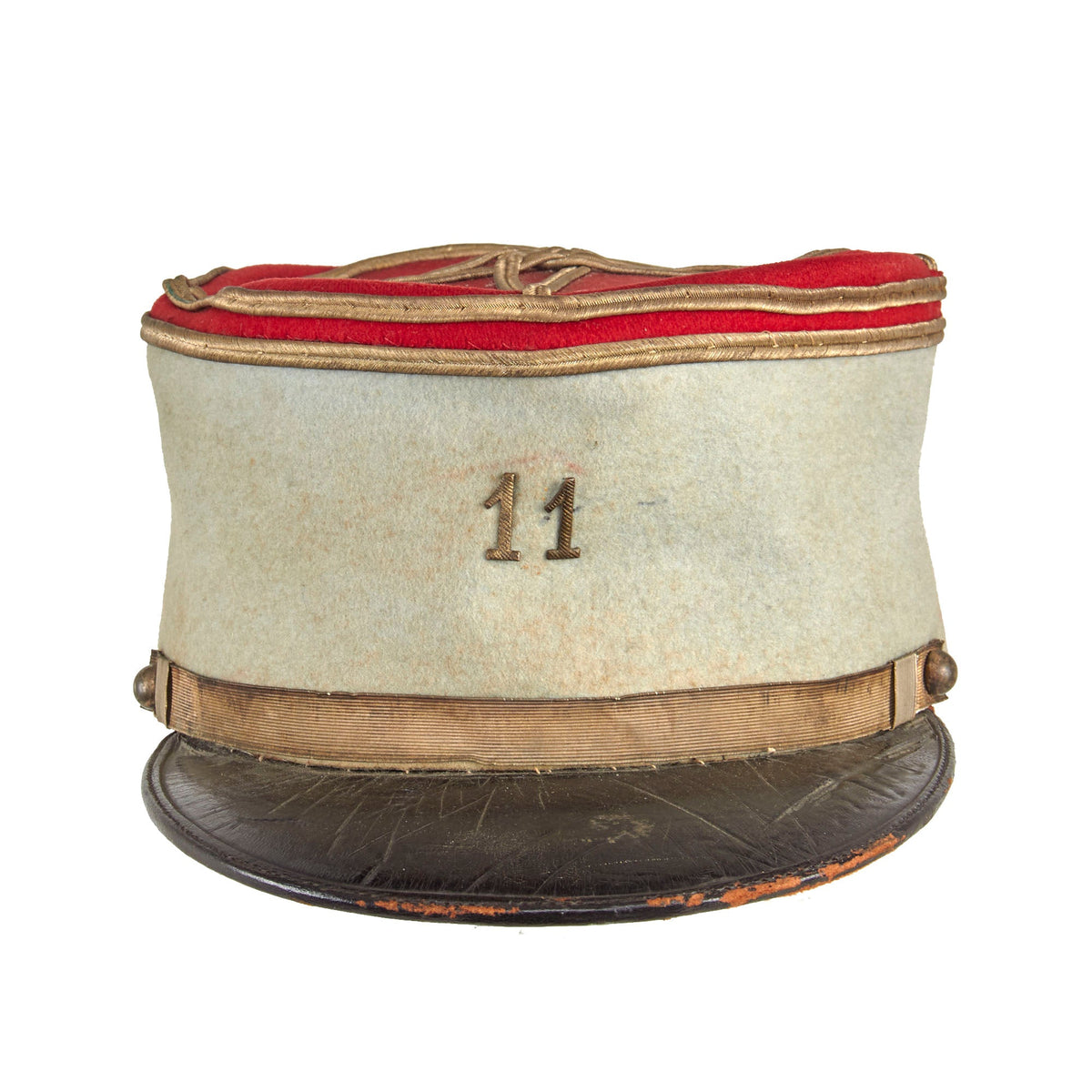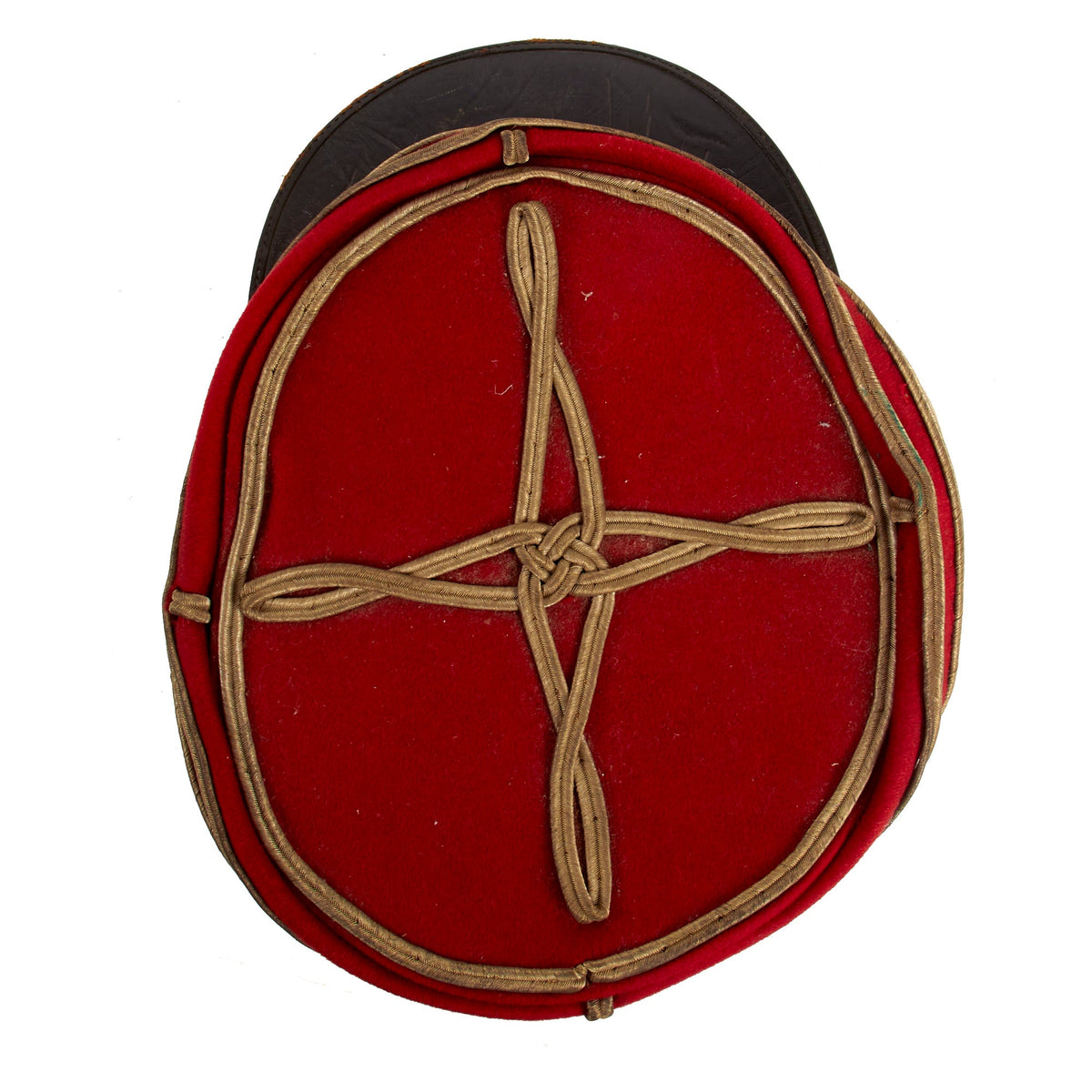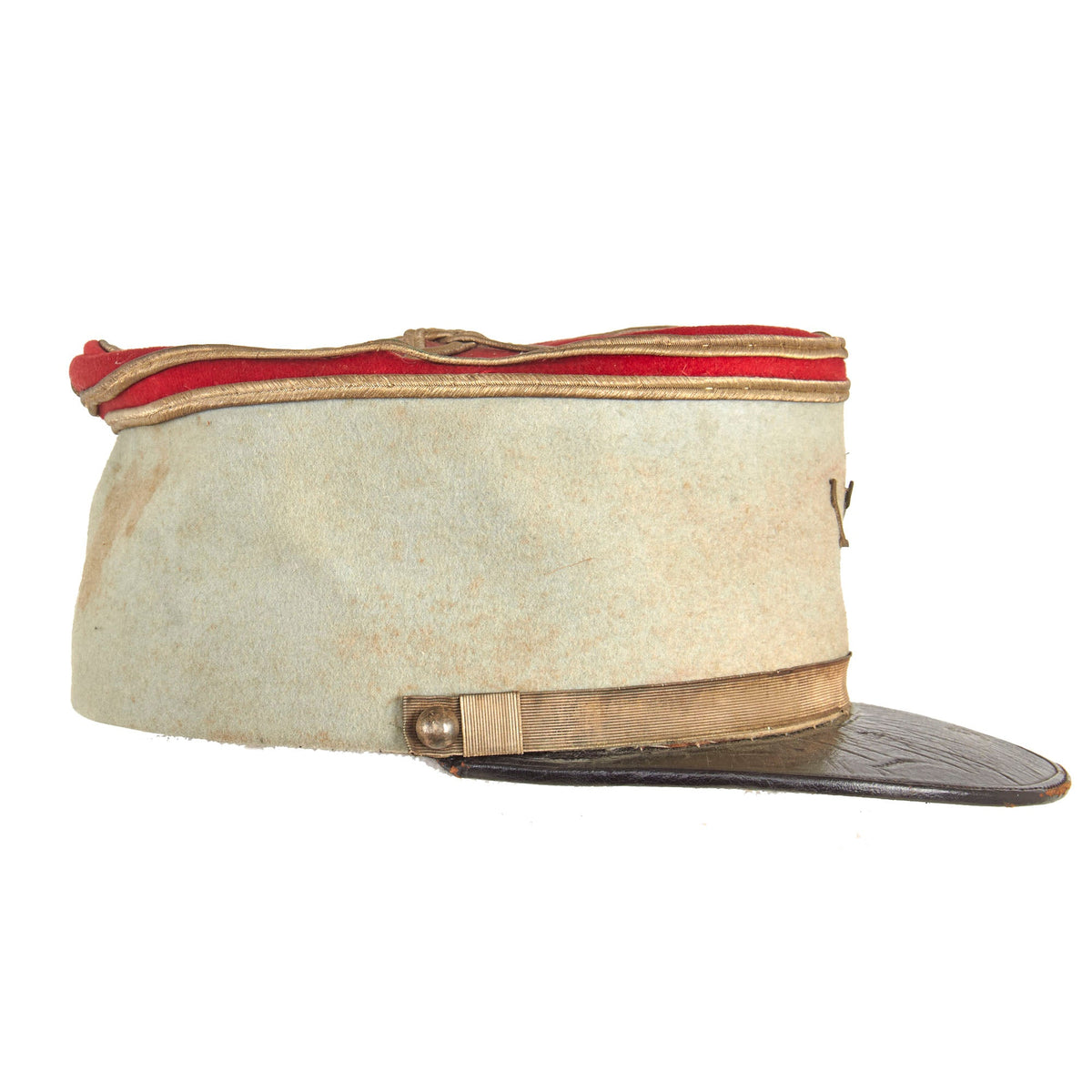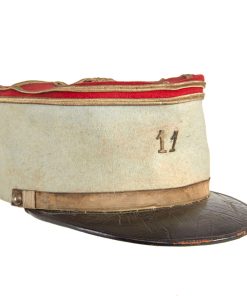Original French WWI Era Model 1886 Officers 11th Infantry Regiment Kepi Original Items
$ 395,00 $ 118,50
Original Item: Only One Available. This is a nice World War One era French Infantry Model 1886 kepi in good condition. This is the lower height style kepi they first started using after phasing out the floppy or “bummer” type kepis. This style was only worn for a short time during WWI into the early 1920’s.
This example is a high quality kepi, most likely a private purchase. Interior has a leather sweatband and no manufacturer’s markings present. Size is approximately 7 (56cm). Overall condition is very good, with typical signs of wear and age.
Comes more than ready for further research and display.
The kepi is a cap with a flat circular top and a peak, or visor. In English, the term is a loanword of French: képi, itself a re-spelled version of the Alemannic German: Käppi, a diminutive form of Kappe, meaning “cap”. In Europe, this headgear is most commonly associated with French military and police uniforms, though versions of it were widely worn by other armies during the late 19th and early 20th centuries. In North America, it is usually associated with the American Civil War, as it was worn by soldiers on both sides of the conflict.
The kepi was formerly the most common headgear in the French Army. Its predecessor originally appeared during the 1830s, in the course of the initial stages of the occupation of Algeria, as a series of d’Afrique. These were intended as alternatives to the heavier, cloth-covered leather French Army shako. As a light and comfortable headdress, it was adopted by the metropolitan (French mainland) infantry regiments for service and daily wear, with the less practical shako being relegated to parade use. In 1852, a new soft cloth cap was introduced for campaign and off-duty. Called bonnet de police à visière, this was the first proper model of the kepi. The visor was generally squarish in shape and oversized and was referred to as bec de canard (duck bill). This kepi had no chinstrap (jugulaire).
Subsequent designs reduced the size of the cap and introduced chinstraps and buttons. The kepi became well known outside France during the Crimean War and was subsequently adopted in various forms by a number of other armies (including the U.S. and Russian) during the 1860s and 1870s.
In 1870, when troops were mobilized for the Franco-Prussian War, large numbers of French soldiers either refused to wear the issued shakos or threw them away. Emperor Napoléon III abolished the infantry shako for active service and replaced it with the kepi on 30 July 1870.
In 1876, a new model appeared with a rounded visor, as the squared visor drooped when wet and curled when drying. The model used in World War I was the 1886 pattern, which was a fuller shape incorporating air vents. Described as “an ideal headdress – which was cheap, distinctive and easy to produce”, the M1886 kepi’s only significant drawback was that the sunken crown collected rain.
Fast Shipping with Professional Packaging
Thanks to our longstanding association with UPS FedEx DHL, and other major international carriers, we are able to provide a range of shipping options. Our warehouse staff is expertly trained and will wrap your products according to our exact and precise specifications. Prior to shipping, your goods will be thoroughly examined and securely secured. We ship to thousands clients each day across multiple countries. This shows how we're dedicated to be the largest retailer on the internet. Warehouses and distribution centres can be located throughout Europe as well as the USA.
Note: Orders with more than one item will be assigned a processing date depending on the item.
Before shipping before shipping, we'll conduct a thorough inspection of the items you have ordered. Today, the majority of orders will be delivered within 48 hours. The delivery time will be between 3-7 days.
Returns
The stock is dynamic and we cannot completely manage it because multiple stakeholders are involved, including our factory and warehouse. So the actual stock may alter at any time. It's possible that you may not receive your order once the order has been made.
Our policy is valid for a period of 30 days. If you don't receive the product within 30 days, we are not able to issue a refund or an exchange.
You can only return an item if it is unused and in the same state as the day you received it. You must have the item in its original packaging.
Related products
Uncategorized
Uncategorized
Uncategorized
Uncategorized
Uncategorized
Armored Burgonet Helmet & Polearm from Scottish Castle Leith Hall Circa 1700 Original Items
Uncategorized
Uncategorized
Uncategorized
Uncategorized
Uncategorized
Uncategorized
Uncategorized
Uncategorized
Uncategorized
Uncategorized
Uncategorized
Uncategorized
